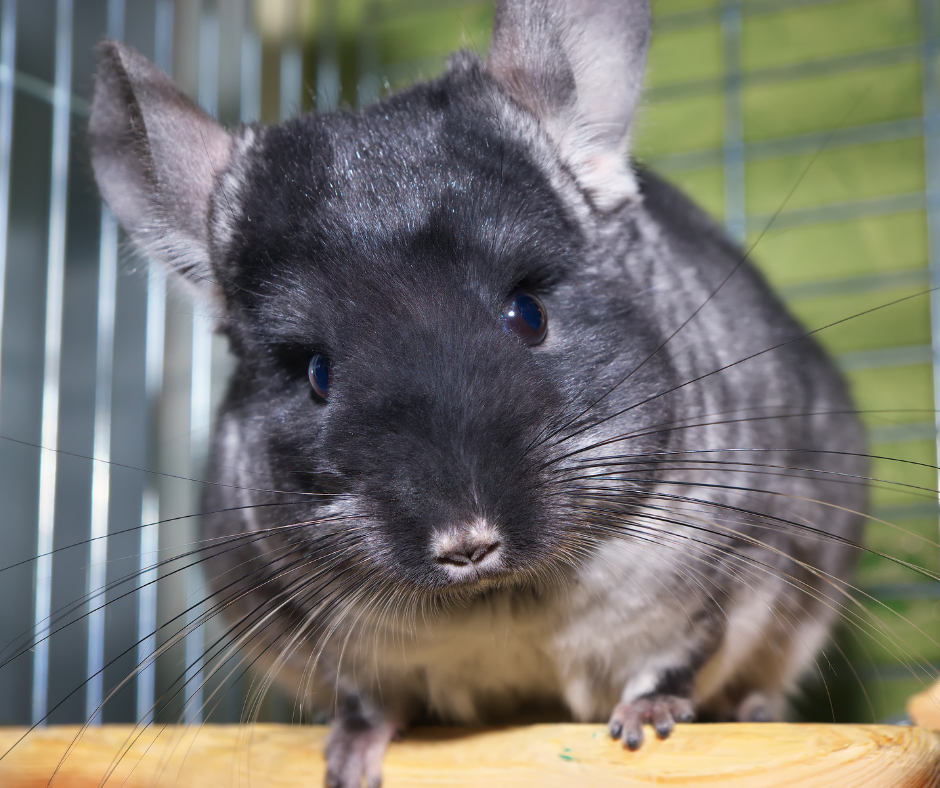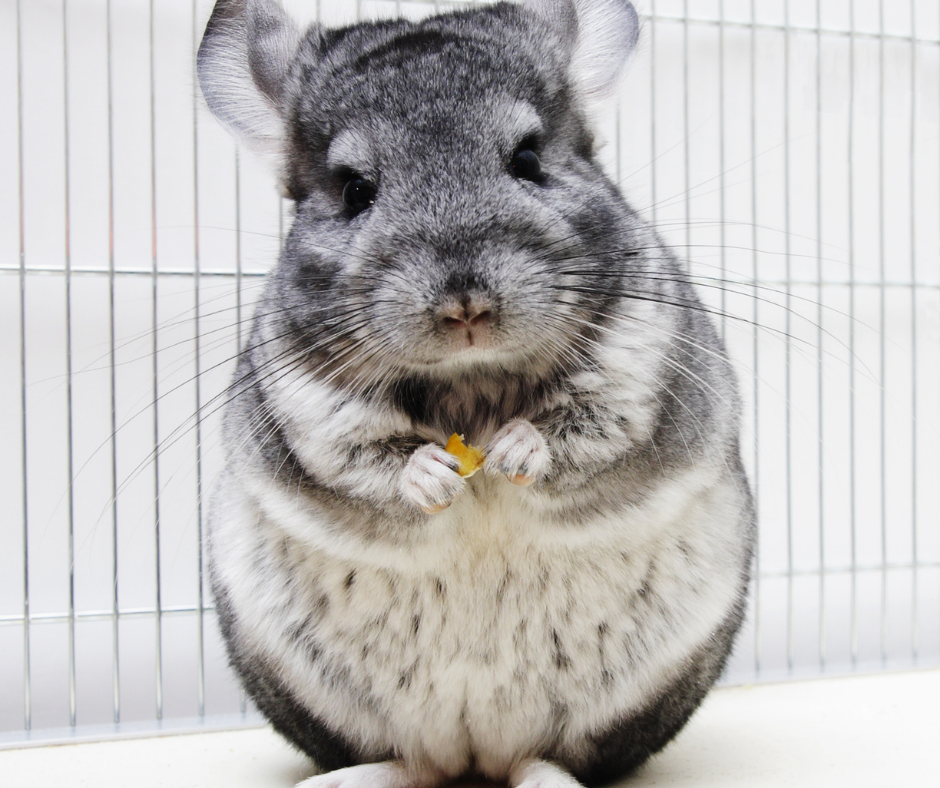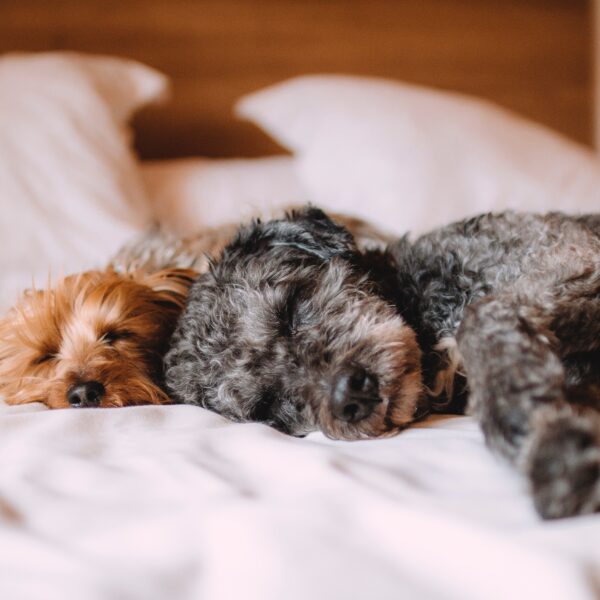Chinchillas can make fantastic pets – but these adorable little creatures can sometimes be a bit shy, often taking some time to warm up to new people. Because of this, when it comes to initially handling a chinchilla, the main thing to remember is to go nice and slowly with them and try not to rush the process. Owners often have to earn their chinchilla’s trust but, if we are patient with these animals, chins can not only make loving companions but they can also be trained!
Want to know more about handling and training these fluff balls? Keep reading…
Chinchilla as a pet
As with many small pets, chins are prey animals, which means they instinctively listen out for threats. Chinchillas have excellent hearing, and they can become worried in noisy environments, making them more defensive and less amenable to handling. But don’t fret – you can help to keep your chinchilla’s stress levels to a minimum by setting up their enclosure in an area of the house that’s generally calm and quiet, avoiding busy rooms where there is a lot of commotion.
If you have a new chinchilla friend, it’s a good idea to initially sit directly outside their enclosure and speak softly for a few minutes each day for a week or so before attempting to handle them, as this will give them a chance to become familiar with you and your voice. Once your new pet is more comfortable with having you around them, the next step is to get them used to the idea of handling. If possible, it’s best to start handling chinchillas when they’re still young, as it will be easier for them to get used to being touched and held at a younger age. However, even for young animals, the handling process will still have to be very gradual.
The time when you handle your chinchilla each day is also important as, like most of us, chins don’t like being woken up! Because of this, the best time to start handling your chinchilla is when they’re already awake, so it’s a good idea to try and fit in with their natural body clock…

When are chinchillas most active?
Chinchillas are crepuscular animals, which means that they are most active at dusk and dawn – so these are normally the best times to interact with them. Initially, it’s best to start off by encouraging your chinchilla to approach your hand, by placing food or treats close by – but always ensure you do this with the enclosure door open, as sticking your fingers through the cage wire may make them appear very tempting to nibble on! Once your chinchilla is comfortable with this first step, you can start to hold the food in your palm, allowing your chinchilla to come over and pick it up. Keep repeating this process over time and, eventually, you should find your chin becomes more and more comfortable with you, eventually starting to climb up onto your hand.
Handling a chinchilla
Next, you can start to actually hold your chinchilla. Again, although it is often very tempting to rush this process, it’s important to build trust with your chinchilla very slowly, as these small fluffballs can take a while to get used to new things.
Once your chinchilla is comfortable with your hand in their enclosure, try slowly and gently scooping them with the same hand, creating a cradle shape for them to sit in. Then place your other hand lightly on their back to prevent them from jumping away. Make sure you do this in their enclosure and over a soft surface, keeping your hands close to the enclosure floor, as your chinchilla may start to wriggle and try to escape. If this happens, try to avoid the temptation to grab or try to catch them, and let them move away on their own – you don’t want them to feel trapped or afraid, as this may cause them to struggle, which can result in injury for both you and your pet. And always ensure you give them a decent break before trying again. Remember, getting your chinchilla used to handling is normally a process of patience and repetition – so don’t lose faith!
Training a chinchilla
Chinchillas are very clever little animals, so once they’re familiar with holding, many owners start to wonder: ‘can you house train a chinchilla’? The answer is yes, and these intelligent animals can also learn other skills and tricks, including coming to you when called or sitting on your shoulder.

If you are interested in attempting to train your chinchilla to come over when their name is called, you can do this by calling their name and holding a treat in you hand. Initially, your chinchilla will come over to fetch the treat from you; however over time they will start to associate their name being called with receiving a treat, and they should eventually start coming over when you call their name without the need for treats to tempt them.
You can also train your chinchilla to sit on your shoulder as, once they are comfortable being handled, they will normally start to climb all over you. The best way to get a chinchilla to stay sitting on your shoulder is to give them a treat every time they happen to climb or sit there as, again, they will then associate receiving treats with sitting on your shoulder!
When it comes to chinchilla litter box training, again, patience is key! It’s also worth bearing in mind that your chinchilla will probably still poop around their cage, although training them to urinate in a litter pan can still help to dramatically reduce the amount of mess in their enclosure overall.
If you do decide to try to litter train your chinchilla, it’s important to ensure you’re prepared. Start off by getting a low-sided rodent litter tray, and it may also be useful to have a small litter scoop for removing dirty litter. And always make sure you only fill the tray with litter that is made specifically for rodents, as chinchillas will often ingest cat litter, which can be very dangerous for them.
Next, observe your chinchilla’s toileting habits (from afar if possible!). Most baby chinchillas will often initially pee all over their enclosure but, once they’re over six months old, they will normally start urinating in the same area, and this is where you should start litter training them. Begin by placing your chinchilla’s litter box in the area where they normally urinate, and you can also scoop some bedding they have already urinated on into the litter box to help them associate this space with toileting.
Also, try to avoid changing your chinchilla’s litter every day if you can, so that your chin feels comfortable urinating in the tray, rather than on the enclosure floor. And, once your chinchilla has gotten used to this, you can start to clean out their litter more frequently.
While your chin is getting used to their new litter tray, try to avoid moving their tray or changing the type of litter they use as, again, this could confuse them. And even when they do become used to their new litter box, always make sure you make any changes very gradually.
So, that concludes our guide on how to handle and train your chinchilla. We think you’ll agree these little creatures are absolutely fascinating! If you’d like to know more about how to care for chinchillas, check out our article on “Everything you need to know about sand baths”.
Don’t forget to like our Facebook page!


